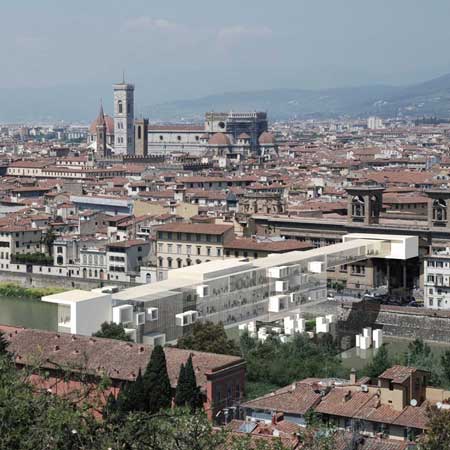
Proposals for Florence by Gruppo Giovani Architetti Firenze
A new inhabited bridge over the River Arno in Florence is among proposals by Gruppo Giovani Architetti Firenze (Young Achitect Group of Florence) designed to provoke debate about architecture in the historic city.
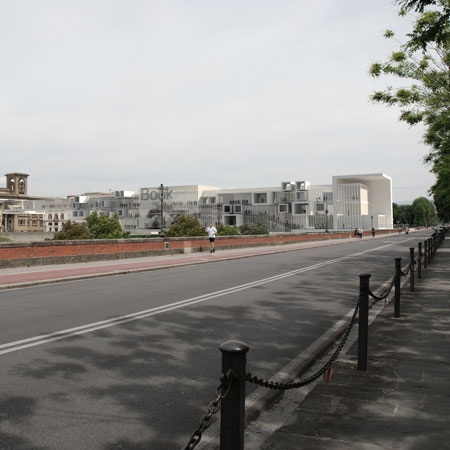
The group also proposes putting a new glass roof over the Uffizi gallery and removing the dome of the cathedral.
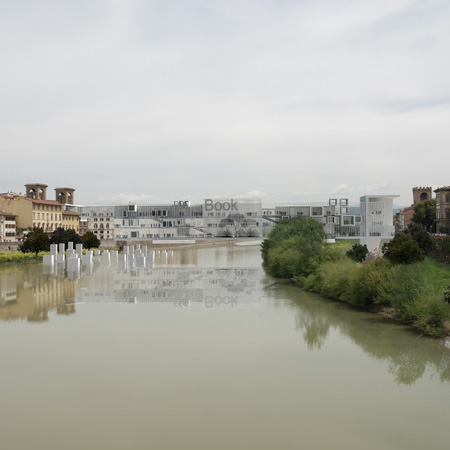
"Our intentions are to provoke a critical reflection about architectural establishment of our town," says Toti Spataro of GGAF.
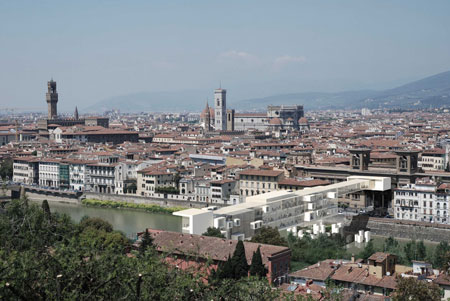
Here's some text about the three proposals plus a list of names of the architects involved:
--
The National Library of Florence, La Biblioteca Nazionale Centrale di Firenze, is the most important library in all of Italy and among the most important libraries on an international level. It has a heritage of inestimable value, whether for its completeness or for its value of historical books and documents. It is the destination of hundreds of scholar’s everyday and supplies tens of thousands of information to researchers in Italy and abroad.
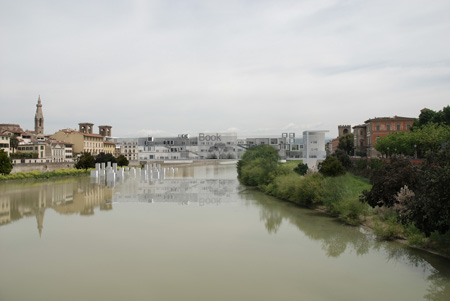
Yet today it is on the verge of collapse: deprived of funds, of space, and of personnel. To make a comparison, libraries in France (the French National Library in Paris) and England (the British Library) with the same institutional duties, have at their disposition headquarters, personnel and budgets with dimensions unfathomably larger than that of Florence’s national library.
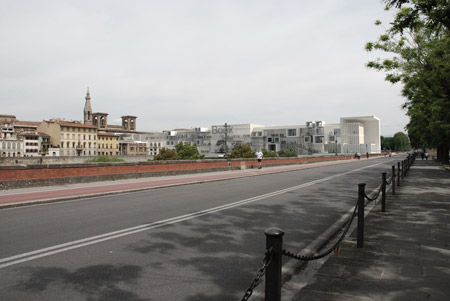
For these reasons as well as the importance that Scientific Research and Culture have in the history and tradition of Florence, we have put forward an idea that wants to reassert the centrality of the national library in the city of Florence as well as in the international setting.
We want to shock the city with a new structure that is light and impalpable with a façade that reaches out across the river to join the other side, the Oltrarno, as though it were a modern Ponte Vecchio facing the city and its river with a new look. We want to give new space and new visibility to an institution that should be one of the founding pillars of Florentine identity and to restore a dignity to Florence so it can establish itself once again in the panorama of world, cultural excellence.
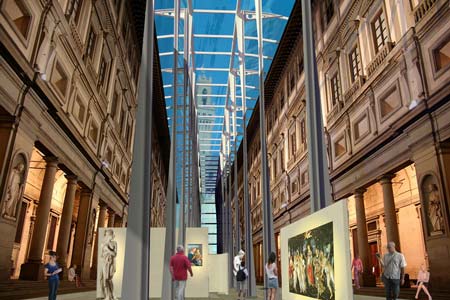
The Galleria degli Uffizi (above) is a magnificent museum, one of the most important in the world; yet we observe it and perceive it in a space that lacks the ability to reflect its renowned fame. Our project proposes an overlay or roof for the gallery bringing it together with the great square or piazzale; a light and transparent component that respects the continuous rhythms of structures from ancient craftsmen without modifying the view of the surrounding city, as though searching for a new association between the Uffizi of today and that which we dream up for the city of tomorrow: a stretched out gallery that welcomes its citizens with a “magnifico” setting.
We are talking about a dream, about an intervention certainly not alternative but instead complementary to the important project already in progress of a new and greater Uffizi. An intervention conceived with a double perspective, addressed not only to the structure of the museum and its special and symbolic dimensions, but also to the city in order to bestow it with a new frame of reference that recognizes its important status.
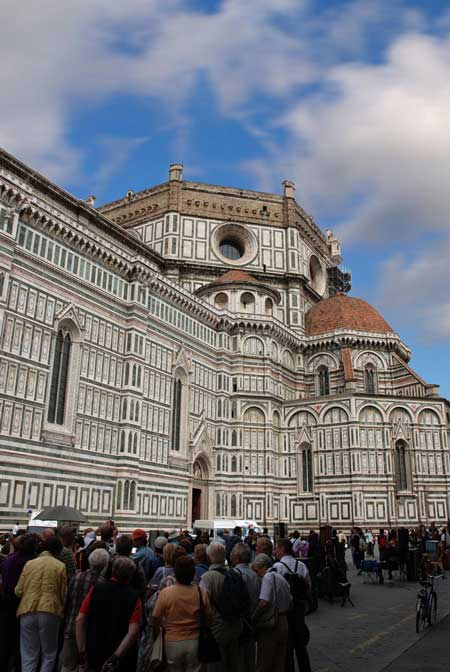
One provocative and yet therapeutic response to the question on how to awaken Florence into the 21st century is to make the dome of the cathedral disappear (above): if for a year or so we applied a futuristic painting of the dome’s surface, making it transparent, we would be led to ponder its concealment and how its cathedral, Santa Maria del fiore, appears somehow incomplete to us, as well as Florence itself. With the removal of the above-mentioned icon, the equation is no longer the same and the system has to be balanced out.
The impact of no longer seeing that red silhouette or those big, white, spinal ridges from the streets of Florence or the surrounding hills is something much more than just a visual effect. The psychologically disruptive impact of its emptiness can not be filled with the reassuring presence of the Arnolfo tower or the Baptistery or even other sites like the austere space of Santa Croce or the crypt of San Miniato, the powerful stone facades of Palazzos or the exciting forms of the new building, the Palazzo di Giustizia.
The passing oblivion of the past and of its significance gives us a glimpse at the possibility of Florence returning to be the place where innovations are forged, the great laboratory of ideas, where everything is possible and nothing is too ambitious. Therefore, by seizing the occasion and banishing every defeatist attitude before this impromptu and oppressive “absence”, we today can think about directing our city with those same cultural and social attitudes that characterized the Florence of the past, arming ourselves with the same courage and the same enthusiasm of those who, like us, were architects of Florence, even if from an age long-ago.
This project is an initiative of GGAF, Young Achitect Group of Florence project is by:
Architects: Matteo Caldirola, Nicola Chirdo, Angelo Di Salvo, Giacomo Magi, Federico Musotti, Pierluigi Pala, Giulio Ridolfi, Daniele Sorrentino, Salvatore Spataro, Martina Tempestini, Tommaso Vecci
Collaborators: Angela Battafarano, Salvatore Perrone, Silvia Pintus, Emiliano Ravanelli, Paola Romboli